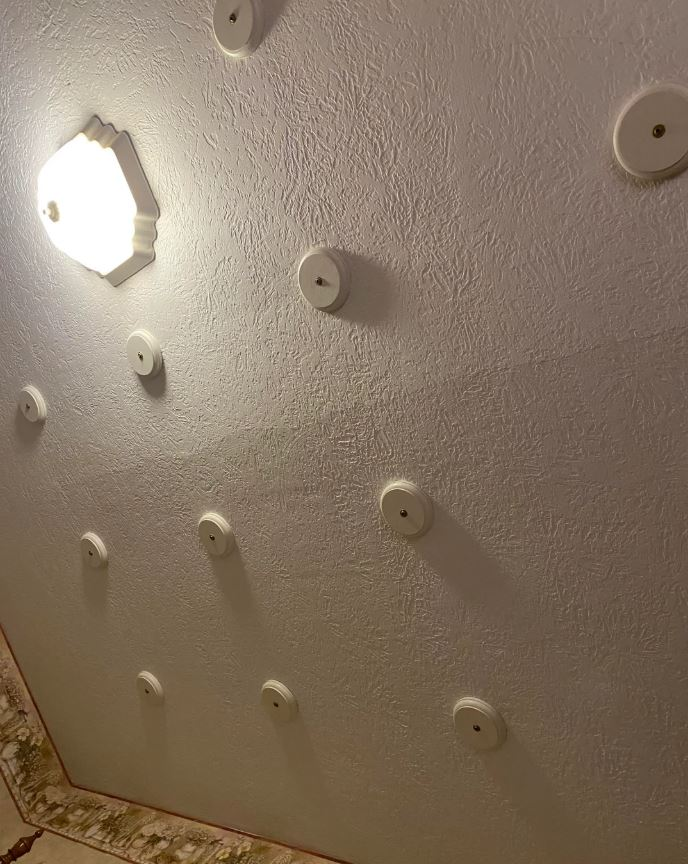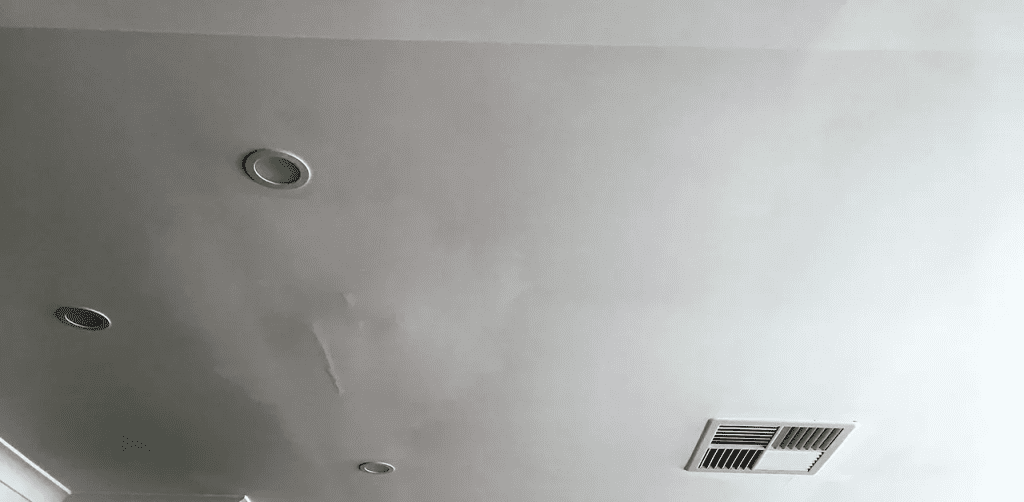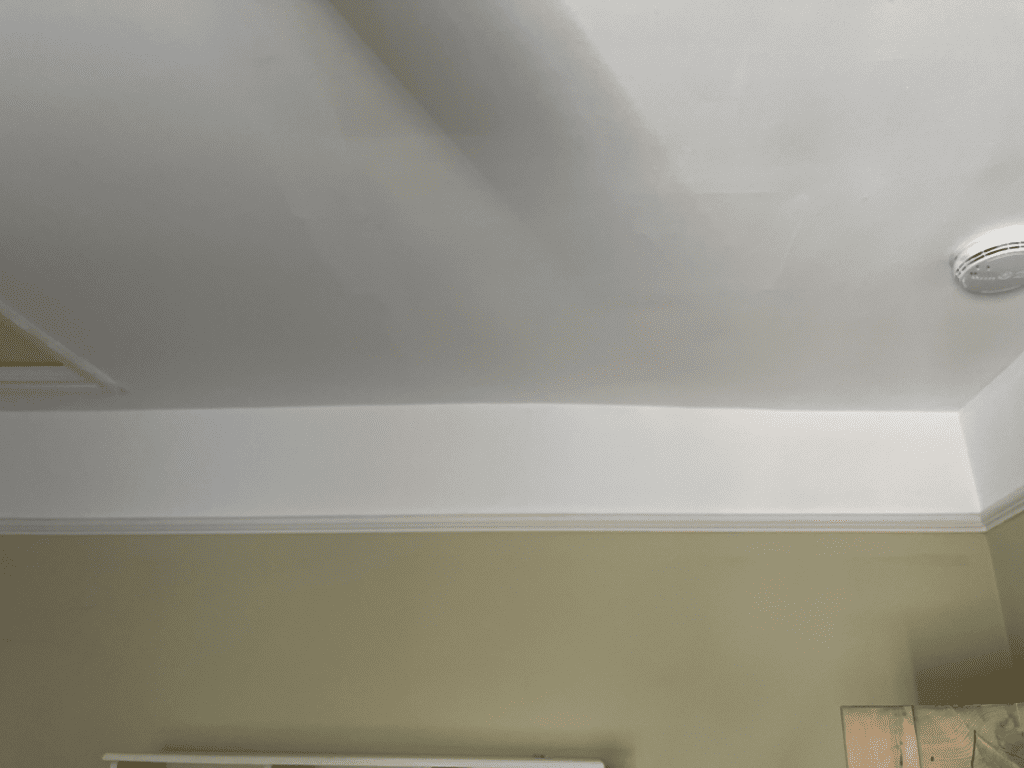Not Just a Bizarre Design Choice
Ever laid down in an unfamiliar room and noticed something strange on the ceiling—those little wooden discs staring back at you in neat little rows? Maybe you chalked it up to weird vintage decor or a forgotten light fixture project. I did too… at first. But then I discovered the truth, and let me tell you—it changed the way I look at old buildings forever.
Those odd-looking circles? They’re not decorations, and they’re definitely not mistakes. They’re a clever, low-tech solution to a very real problem that’s haunted old homes for decades: sagging plaster ceilings.

The Rise and Fall of Plaster Ceilings
Before modern drywall became the go-to, most ceilings were made using lath and plaster. Builders would nail thin wooden strips (called lath) to ceiling joists, then slather wet plaster over the top. The plaster would squeeze between the gaps in the lath, dry, and create a strong, durable surface.
That is… until time gets involved.
Fast-forward 70 or 100 years, and that once-solid ceiling begins to betray its age. Plaster starts to dry out, crack, and pull away from the lath below. Sometimes it even sags ominously—or worse, crashes to the floor in big chunks. (Ask me how I know… my living room lamp still hasn’t recovered.)
So how do you fix a ceiling that’s trying to collapse but can’t be screwed back directly? Enter: the humble wooden disc.
Video: Easiest wall FIX EVER!
Why Wooden Discs Are Actually Ceiling Lifesavers
When plaster starts separating from the lath, simply screwing it back into place won’t work—it’s far too brittle and will just crumble under pressure. Instead, builders and homeowners came up with a clever workaround: use small wooden circles, usually about the size of a silver dollar, and anchor them into the lath behind the plaster.
Why discs?
Because they spread out the pressure, pulling the plaster back in place without cracking it. Think of it like using a wide paddle instead of a nail—you’re gently holding everything together instead of driving force into one tiny spot.
It’s practical. It’s cheap. And it actually works shockingly well.

Metal Washers vs. Wooden Discs: Which Is Better?
Nowadays, you might see metal plaster washers being used for the same job. They do the trick and are often sold at hardware stores specifically for this purpose. But back in the day—or if you’re trying to keep that classic aesthetic—wooden discs were the go-to.
They’re not just functional; they look like part of the original craftsmanship. If you’re going for that rustic or vintage vibe, they actually add character instead of taking it away.
A True Story from the Ceiling Files
Years ago, I lived in a charming but very wobbly 1920s bungalow. The dining room ceiling was drooping so badly it looked like a soft tortilla hanging from the rafters. I didn’t have the money (or time) for a full ceiling demo. So I grabbed a drill, a handful of pre-cut wooden discs, and went to work.
I screwed the discs in a tight grid across the damaged areas, pulling the plaster gently back into place. After a layer of paint, the ceiling looked completely new—and it held up for years. No crumbling. No drooping. No falling plaster in my pasta.
Sometimes, DIY doesn’t have to be pretty to be powerful.
Video: How to fix dropped sagging ceiling
Why You Might See Them in Only One Room
If you’re noticing these discs in just one room—like in a quirky hotel or a friend’s guest bedroom—it’s probably because that room had more serious plaster issues than the others. Maybe it had a plumbing leak or just saw more wear and tear over the years.
Often, homeowners only repair what’s necessary, so you won’t always find them throughout the entire house. And if you’re spotting them in a hotel, it likely means management opted for a quick and cost-effective repair rather than a full-blown renovation.
Should You Hide Them or Let Them Show?
That depends on your taste. Some people love the visible discs—they tell a story about the age of the building and the people who cared enough to fix it. Others prefer to cover them up with joint compound and paint, blending them into a smooth ceiling.
There’s no wrong choice here. It really comes down to how much character you want in your space.
Personally? I think there’s something special about leaving them visible—like seeing the brush strokes in a painting. They remind us that old things are worth saving, even if it takes a little creativity and elbow grease to do it.

More Than a Fix—It’s a Philosophy
In today’s world of “just replace it,” seeing something patched and preserved like this feels refreshing. These wooden discs don’t just hold plaster in place—they represent a mindset that values repair over replacement, effort over ease, and function over flash.
They’re a quiet reminder that the past may be imperfect, but it was full of resourcefulness.
Conclusion: If You’ve Got Ceiling Dots, You’ve Got History
Next time you look up and see those strange little circles on a ceiling, don’t assume they’re weird or random. They’re a sign of age, of survival, and of someone choosing to fix instead of forget.
It’s not just a ceiling. It’s a story. And those wooden dots? They’re the punctuation marks that keep it from falling apart.